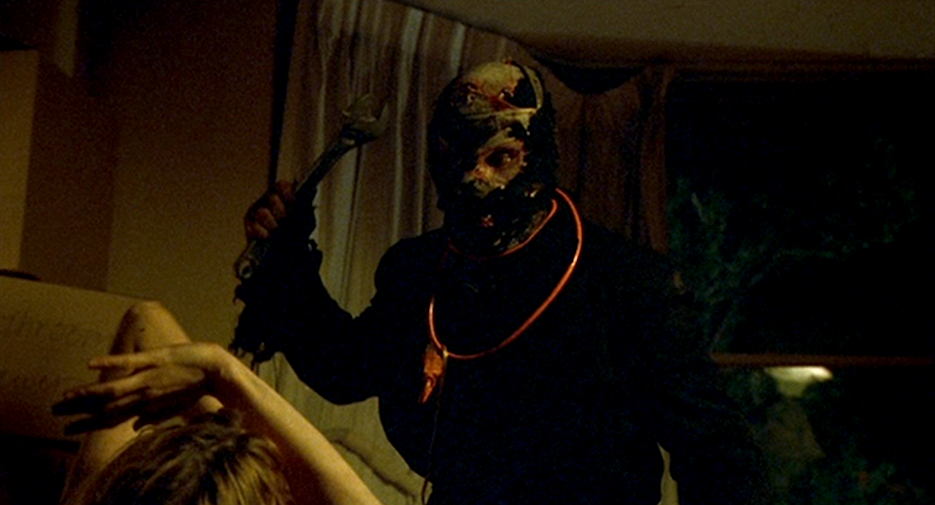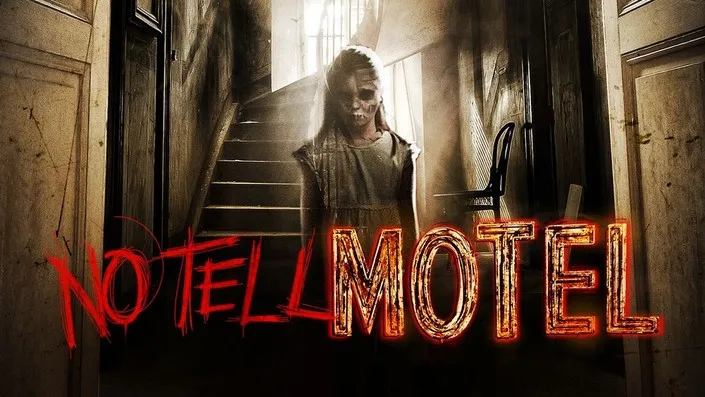Some renovations uncover more than dust and drywall — some dig straight into hell.
Toolbox Murders (2004) is a grisly, atmospheric reimagining of the 1978 cult slasher, directed by horror veteran Tobe Hooper (The Texas Chain Saw Massacre). Set almost entirely inside a decaying Los Angeles apartment building, the film takes the slasher formula and gives it a strange, occult twist, blending urban decay with supernatural violence.
The story centers on Nell (Angela Bettis), a quiet schoolteacher who moves into the Lusman Arms — a rundown Art Deco building being slowly renovated into upscale apartments. The tenants are a bizarre mix: secretive, distant, and increasingly scarce. Strange noises echo through the walls, and one by one, people begin to vanish — though no one seems to notice.

Nell quickly becomes convinced something is terribly wrong. Tools go missing. Screams are heard behind locked doors. Bloodstains appear where no one is reported hurt. And the building itself seems to hold secrets — names erased from blueprints, sealed rooms, and sinister symbols carved into the architecture.
What begins as a slow-burn mystery turns brutal when the killer — a masked, deformed figure wielding power tools — reveals himself. Victims are dispatched with drills, nail guns, hammers, and worse. But unlike a typical slasher villain, this killer isn’t just human — he’s tied to something older, darker, and unexplainable.
Tobe Hooper fills the film with dread, rather than just gore. The Lusman Arms becomes a character itself: a haunted monument to forgotten crimes, arcane rituals, and human suffering. It’s not just the killer stalking the halls — it’s the building’s history, warped by decades of neglect and evil.

Angela Bettis gives a strong performance, grounding the horror with a mix of fear and stubborn determination. As Nell uncovers the truth behind the building’s origins — its founder a man obsessed with alchemical immortality — the film veers into supernatural horror. The killer, it turns out, may be the failed product of those rituals, cursed to dwell behind the walls, collecting victims as offerings to whatever powers lie below.
While Toolbox Murders wears the slasher mask proudly, it also flirts with Lovecraftian dread. The violence is shocking but purposeful — suggesting a malevolent intelligence behind the madness. Hooper uses the film not just to scare, but to suggest: evil is not always loud. Sometimes, it just waits behind drywall, listening.
Critics were divided. Some praised its return to raw horror and effective gore, while others found the plot disjointed or undercooked. But fans of Hooper’s gritty style and unconventional horror beats found in it a spiritual cousin to Texas Chain Saw — brutal, strange, and oddly dreamlike.

The ending leaves little comfort. The killer may be gone, or not. The building breathes again, hiding whatever horror still festers inside. And Nell, scarred and shaken, realizes she may have escaped — but she didn’t win.
Toolbox Murders isn’t polished, but it doesn’t want to be. It’s ugly, anxious, and haunted — a love letter to low-budget terror and the horrors we build around ourselves.



